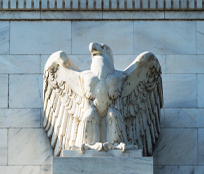There has been a lot of discussion about whether US Treasury bonds will continue to function as a diversifier or hedge for portfolio risk. Some argue that the low level of yields—and by extension the limited amount of room that yields can fall from here—undermines the diversifying properties of Treasuries. While we can all agree that today’s yields are low, it may be beside the point in this particular conversation. The most important characteristic of a hedge is that it should be negatively correlated with risk assets. There are many reasons to expect that US Treasury bond prices and risk asset prices will continue to be negatively correlated, even in this low-rate environment. Accordingly, Treasuries are likely to continue to function as a diversifier for other risks in investors’ portfolios.
The reasons to expect the negative correlation to persist include the following:
- During periods of risk-off sentiment, there is often a “flight to quality” as investors put a premium on safe and liquid assets at the expense of riskier assets. US Treasuries are the most likely beneficiaries of any “flight to quality.” Importantly, during these periods investors care more about the safety and liquidity of what they are buying than they do about the yield, so it’s not clear how the low level of yields would change this type of behavior.
- Risk-off sentiment often corresponds with downgrades to expectations for future growth and inflation. This in turn causes risk-free yields to move lower, as future expectations for growth and inflation are immediately related to the level of longer-term risk-free rates. And, of course, a move lower in yields drives prices higher for US Treasury bonds.
- With US overnight rates at the zero lower bound, and Fed officials adamant that negative rates are not under consideration, it seems straightforward that yields on short-dated US Treasury bonds are unlikely to fall further. (Of course, in a very extreme scenario the Fed could reconsider its current stance on negative rates, but that seems unlikely over the next few quarters.) Longer-dated bonds are a different matter, however, and it is there that the Fed could do more, if needed. In particular, should the recovery falter or should risk sentiment deteriorate, the Fed could seek to boost financial conditions by extending the maturity of its bond purchases or by providing guidance on the length of time its purchases will continue. Such a move from the Fed would likely contribute to a further rise in prices of longer-date US Treasury bonds, regardless of the level of yields at the time.
Using negatively correlated assets to reduce portfolio volatility is a very basic idea in finance. Historically, Treasuries have been widely acknowledged to fill that role, and indeed the correlation between US Treasury bond prices and risk asset prices has been reliably negative for the past two and a half decades. Today the low-yield environment has led many to question whether Treasuries will continue to work as a hedge going forward. In questioning the role of Treasuries in portfolios, many investors have posed the question incorrectly. Rather than focus on the level of yields, the focus should be on the property that makes Treasuries a hedge—namely, will they continue to be negatively correlated with risk assets? As long as that negative correlation holds, and as discussed earlier there are good reasons to expect it will, US Treasury bonds should continue to work as a diversifier. As a result, Treasuries will likely continue to provide an opportunity for investors to diversify their portfolios.



